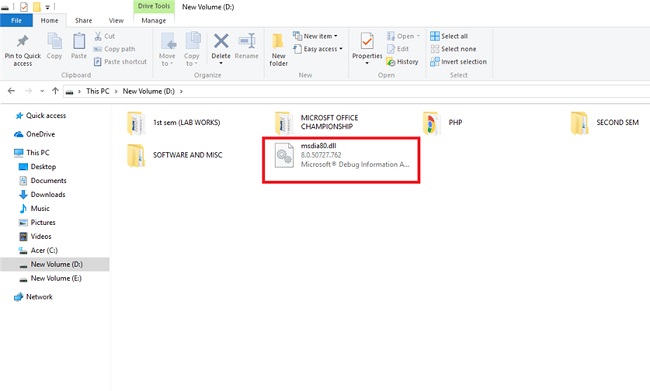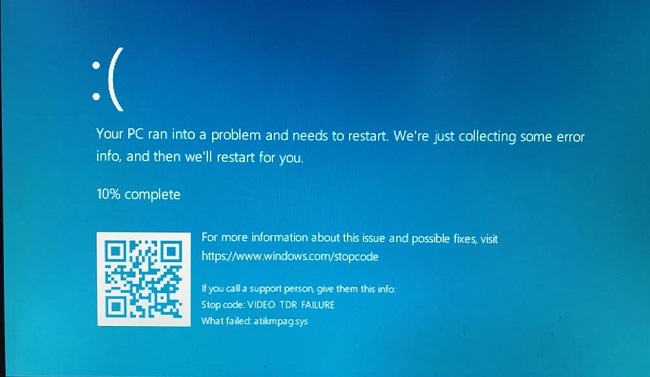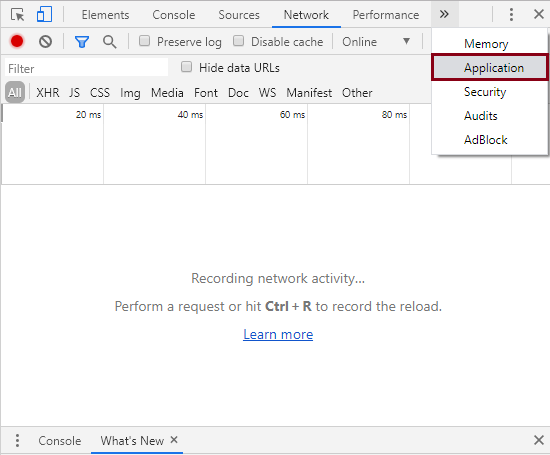On the off chance that you like to purchase or sell utilized things locally, the underlying spot to look is presumably going to be online sites like Craigslist. Craigslist has a great deal to offer merchants. It’s allowed to rundown and sell on Craigslist. What’s more, because most exchanges are nearby, you can get your cash and dispose of stuff rapidly.
In any case, you may not be alright with Craigslist for reasons unknown. Or then again, perhaps you simply need increasingly grouped destinations to look over. These Craigslist choices permit you to purchase, sell, or exchange on the web in case you’re searching for something other than what’s expected.

18 Best Sites Like Craigslist to Buy or Sell
On the off chance that you are searching for destinations like Craigslist, here are a few Craigslist choices you can consider. Look at the subtleties of these destinations. You may discover them a superior method to sell your stuff on the web.
Read Also:
1. Facebook
You may consider Facebook a spot to peruse the most recent notices for your companions or watch viral recordings. What you probably won’t understand is that Facebook permits you to purchase or sell locally.
Since almost everybody has a Facebook account, Facebook “available to be purchased” postings can be very various. You may be shocked at the enormous number of things you see recorded available to be purchased on Facebook. If you are making some hard memories selling something on Craigslist rapidly, consider posting your item on Facebook.
Make sure to peruse the gathering’s principles before posting an item to sell. A few gatherings are more prohibitive than others. Like Craigslist, you can’t sell guns with any of the Facebook Yard Sale gatherings. Selling on Facebook is free.
2. Letgo
You may have seen the strict “cliffhanger” TV plugs for Letgo a year or two prior. Notwithstanding Facebook, Letgo is presumably the most mainstream Craigslist elective. Letgo improves work than Facebook at gathering item postings.
You can scan for explicit watchwords or general classes like Fashion and Accessories. This featuremakes Letgo simpler to scan for things here and there. At last, Letgo is additionally advantageous. You impart through their application while cooperating with a potential purchaser or dealer.
Subsequently, you don’t have to list your telephone number or email address. This element encourages a few purchasers and venders to feel progressively good about leading exchange with an outsider.
3. Swappa
Swappa causes you purchase and sells a wide assortment of electronic things, for example,
- cell telephones
- cameras
- watches
- video games
- tablets
And then some. They even assist you with purchasing and sell keen home gear, for example, voice collaborators, spilling gadgets, and indoor regulators. As a dealer, you won’t pay any charges to sell on Swappa.
Purchasers pay a little charge when purchasing on Swappa, as Swappa helps help with the deal to guarantee all goes quickly. The cost is refundable (commonly) if the purchaser is distraught once they’ve gotten the item.
4. Recycler
On the off chance that you live in an enormous U.S. city, Recycler is another acceptable choice. Recycler began as a neighbourhood arranged paper in Southern California. It turned into a national commercial centre in 2010 and now flaunts 18 million month to month clients.
You can utilize Recycler to purchase or sell pets, discover houses to lease, and even sell utilized vehicles.
At the point when you sell on Recycler, you can rapidly present your postings on Facebook and Twitter. To help your introduction on Recycler, it’s likewise conceivable to utilize paid promotions to target explicit purchasers or markets.
5. Offerup
To the extent Craigslist options go, Offerup is moderately little. Be that as it may, it despite everything has a lot of item postings and has become progressively well known as of late with 23 million application downloads. It was additionally granted App of the Year by Geekwire.
Venders and guests can communicate their posting on Facebook also. The two purchasers and vendors can get evaluations as well. It can help cause the business procedure to feel progressively make sure about and downplay tricksters.
To satisfy its namesake, Offerup permits you to acknowledge the dealer’s recorded cost or make your offer. You can likewise add postings to your watch list if you are not prepared to purchase immediately.
6. Oodle
Oodle has a marginally extraordinary interpretation of helping you purchase or sell locally. With different locales, you just observe postings that dealers genuinely posted on that commercial centre. With Oodle, a few postings are presented straightforwardly on Oodle.
However, they likewise brush other Craigslist choices to grow their postings. For instance, you may see vehicles recorded from Cars.com notwithstanding vehicles sold by real Oodle individuals. Oodle can likewise be a decent method to purchase or sell collectables as they will likewise list items from eBay for neighbourhood pickup.
Likewise, it permits merchants to promote postings using Facebook also. Oodle has a wide exhibit of classes including pets, personals, and administrations.
7. Bookoo
Bookoo (as in I spared a bookoo measure of cash by utilizing Bookoo) is outfitted as a family-accommodating Craigslist elective. You can list things to sell each in turn or publicize a yard deal. There are Bookoo areas found all over the nation. Numerous areas are in towns with army installations.
Bookoo makes it simpler for military individuals to purchase or sell assets with their latest move. While this site is somewhat littler than the others at 2,355,912 current individuals, it has a simple to utilize stage for purchasing or selling. It has live talk support, and a web-based life feels that it is additionally family-accommodating.
8. Geebo
Established in 1999, Geebo permits you to purchase or sell the stock, overwhelming gear, vehicles, land, and administrations in 160 networks. You should check out Geebo if you live in a significant city like L.A. or then again Chicago. Geebo could likewise be a decent decision if you live in a mid-significant city, for example, Virginia Beach, Tulsa, or Cincinnati.
As an approach to make purchasing and selling more secure than other online characterized destinations, Geebo offers “SafeTrade” exchanges. A “SafeTrade” happens when purchasers and venders consent to meet at a nearby police division.
On the off chance that you are reluctant to attempt Craigslist since you don’t have a sense of security meeting is simply an open parking garage, Geebo can be a decent Craigslist elective.
9. Hoobly
In contrast with the other Craigslist options recorded in this article, Hoobly likely has the practically indistinguishable look and feel of Craigslist. You can look for pretty much anything on this site. Furthermore, there are item postings in Canada and Europe.
You may have the most accomplishment with Hoobly by selling or purchasing pet creatures as there are seemingly a larger number of postings for this classification than any of the other product classifications recorded. It is allowed to post or shop on Hoobly.
10. PennySaver USA
Perhaps, once upon a time, you got a free PennySaver paper from the paper that remains at the traffic intersection or supermarket. Presently, they have moved on the web, and you can discover neighbourhood bargains by entering your postal division. They despise everything distribute a printed release also.
You can distribute paid promotions on PennySaver also. It is particularly similar to the grouped area you would discover in your nearby paper.
11. Promotions Globe
Promotions Globe is an online paper ordered advertisement administration. With Ads Globe, you can post boundless promotions for about any class including stock, automobiles, land, rentals, pets, and travel. It’s likewise conceivable to promote your business administrations or occasions with this Craigslist elective.
12. ClassifiedAds.com
This site is completely allowed to utilize, and you can purchase or sell pretty much anything. ClassifiedAds.com has a basic design and is suggestive of the arranged advertisements you would find in a paper aside from pictures transferred.
Similarly, as with numerous Craigslist choices, you will have the most achievement utilizing ClassifiedAds.com if you live in an enormous city even though they do have sheets for some littler districts over each state also.
13. US Free Ads
US Free Ads has been around since 1999. It despite everything has an essential design suggestive of around 2000 sites. Not at all like a portion of different locales that permit boundless postings for venders, free participation with US Free Ads will empower you to just rundown two items without a moment’s delay.
On the off chance that you are a successive merchant or need extra selling highlights, you should update. The Gold participation is $10 every year for 25 advertisements without a moment’s delay. Or on the other hand, you can pick the Premium participation, which is $9.99 every month for boundless promotions.
To purchase on US Free Ads, you just need a free enrollment. As indicated by US Free Ads, their most well-known postings are pooches, ponies, and houses.
14. Location
This website offers online classifieds in more than 60 nations. Most huge U.S. urban areas have a Locanto board. This site accepts paid promotions from national retailers so only one out of every odd posting will be nearby.
You will most likely have the best possibilities with Locanto on the off chance that you live in Los Angeles, Miami, or New York. Those urban communities are their included sheets.
Posting your promotion on a city board is free. Be that as it may, you can pay extra to stretch out the development to extra-urban areas. You can likewise pay to expel outsider advertisements from your posting. Also, for an additional expense, you can pay to send your promotion to the highest point of a purchaser’s indexed lists.
15. USA Today Classifieds
USA Today is one of the most broadly coursed papers. It works admirably of introducing the most recent news in a right configuration. They additionally have a characterized segment for the print and online versions.
This alternative is most likely possibly best on the off chance that you have a first-class thing to sell since it will cost you to distribute your posting. Nonetheless, you can get a broad introduction to imminent purchasers.
16. Trovit
Trovit is an ordered web crawler and is perfect for purchasing. With Trovit, you can look at different online arranged databases for homes, vehicles, or occupations. The site is genuinely efficient and simple to utilize.
Simply pick your nation first (Trovit works far and wide) and afterwards pick your subject. You can decide to see Homes, Cars, or Jobs at the highest point of the page. From that point onward, you’ll be coordinated to limit your quest to discover postings for your thing close to you.
Note that not all zones have postings on Trovit as of now. This reality could affect whether you discover vehicles, homes, or employment near your region of residence.
17. eBay
By far, most eBay closeouts and deals are conveyed through the mail. Yet, there are nearby pickup choices for things that are excessively huge or cumbersome to deliver at a sensible expense. You should seriously think about this choice when searching for or selling collectables, level screen tv’s, and autos (eBay engines).
eBay can likewise be a decent alternative if your items don’t sell locally on Craigslist or one of these different destinations. While it’s conceivable to sell nearly anything on a neighbourhood arranged site, there may be frail interest in your market.
For instance, a winter parka or snowshoes will presumably sell at a greater expense in Alaska than the Louisana straight. One drawback to eBay is that they do charge posting and selling expenses in many cases.
Those expenses can cut into your benefit as you sell. Notwithstanding, you could generally raise your value a piece to take care of the expense of posting and selling charges on eBay.
18. Mercari
Mercari is a selling application that makes it extremely simple to sell pretty much anything on the web. At the point when you sell through Mercari, you just sell shippable things, so there’s no face to face meetups.
Postings on Mercari are free; however, you’ll pay a 10 percent level charge when your thing sells. Additionally, Mercari offers for you to print out a prepaid delivery name for when your thing sells. That implies you’ll need to consider delivering costs when evaluating your stuff on Mercari.
One fascinating thing about Mercari is that when somebody purchases your item, you have to rate them utilizing the Mercari rating framework. The purchaser likewise needs to rate you once they get your item.
This rating framework can be useful in helping you pick who you work with on Mercari. Furthermore, it helps Mercari guarantee that individuals who are working together on the site are reliable.
Details About the Craigslist Website:
Craigslist, a name synonymous with local classifieds and community forums, has established itself as a digital marketplace for everything from jobs to housing, services, items for sale, and much more. Founded by Craig Newmark in 1995, Craigslist revolutionized the way people connect for various needs in their local area.
This article delves into the details of Craigslist, exploring its history, features, impact, and how it continues to be a relevant and widely used platform.
History and Evolution
Craigslist’s journey began in San Francisco, as a simple email distribution list among friends for local events. Its popularity surged, leading to the creation of a web-based service in 1996. Initially, it focused on job listings and housing, but soon expanded to cover a vast range of categories.
By the early 2000s, Craigslist had grown into a national and then international service, now available in over 70 countries.
Website Features
User-Friendly Interface
Craigslist’s website design is famously minimalistic, focusing on functionality over aesthetic flair. This simplicity makes it easy for users of all ages and tech-savviness to navigate the site.
Diverse Categories
Users can browse a wide array of categories such as jobs, housing, for sale items, services, community events, and discussion forums. This diversity makes Craigslist a one-stop shop for many daily needs and interests.
Localized Searching
Craigslist is structured around cities and regions, allowing users to search and post listings in their local area. This localized approach fosters community connections and relevant results.
Free and Paid Postings
While most listings on Craigslist are free to post, certain categories like job postings in major cities incur fees. This model helps maintain the quality and relevance of listings.
Impact and Usage
Community Building
Craigslist has played a significant role in community building, providing a platform for people to connect locally. Whether it’s finding a job, a home, or engaging in community activities, it brings people together for mutual benefit.
Economic Influence
The site has significantly impacted the local economies by providing a free or low-cost platform for small businesses and individuals to advertise their services and products.
Challenges and Criticisms
Despite its success, Craigslist has faced challenges, including controversies related to illegal activities and scams. The platform has continuously worked to implement measures to combat these issues, although it remains a point of concern for some users.
Safety Tips for Users
To ensure a safe and positive experience, users should follow safety tips like meeting in public places for transactions, verifying the authenticity of listings, and never sharing personal financial information.
Future of Craigslist
Craigslist has remained relatively unchanged in its core design and functionality, a testament to its effective and enduring model. However, with the rise of mobile technology and competing platforms, there’s speculation about potential updates or changes to stay competitive and relevant.
Read Also:
Conclusion
In any case, for some reasons, Craigslist isn’t directly for everybody. It could be a non-alternative because of security concerns, or just because your thing isn’t selling there. Fortunately, you have options in contrast to Craigslist that can assist you with selling your things and make some money.
Contingent upon where you live, some Craigslist choices will be a superior choice than the others. Just time and experience will assist you with realizing which elective destinations are best for your zone. Try these alternatives whenever you want to purchase or sell locally on the web. You may be amazed at the outcomes.









